Parallel Lines: Cail Soria
Powder aims to feature only the best products and services. If you buy something via one of our links, we may earn a commission.
Check out the rest of the Parallel Lines series here.
Athlete: Cail Soria (she/her)
Primary 23/24 Terrain: Varied; Snowmass is home.
Sport: Snowboarding
As Cail Soria awaited one final surgery in a wrenching five-year recovery saga from a climbing fall in 2017 that left her with a shattered leg and ankle and a broken back, she sent a Hail Mary question out into the social media abyss:
“I’m about to get my leg cut off. Do you know anyone else going through a similar thing I could talk to?”
And while the athlete Cail messaged did end up connecting her with a couple other adaptive folks in the outdoor community, they happened to be the only two climbers and skiers Cail had already discovered on her own. “So I just thought, okay, it’s just these two people in the whole industry.”
The experience incorrectly confirmed Cail’s fear that there weren’t many other disabled folks out there, doing what she hoped to do post-op. “I felt like I was going through this very individual, super lonely experience.”
Cail says that sense of isolation not only made her recovery more emotionally taxing, it also made it challenging to find the gear she needed to get back into the sports - climbing and snowboarding - that she had loved so much before her amputation.
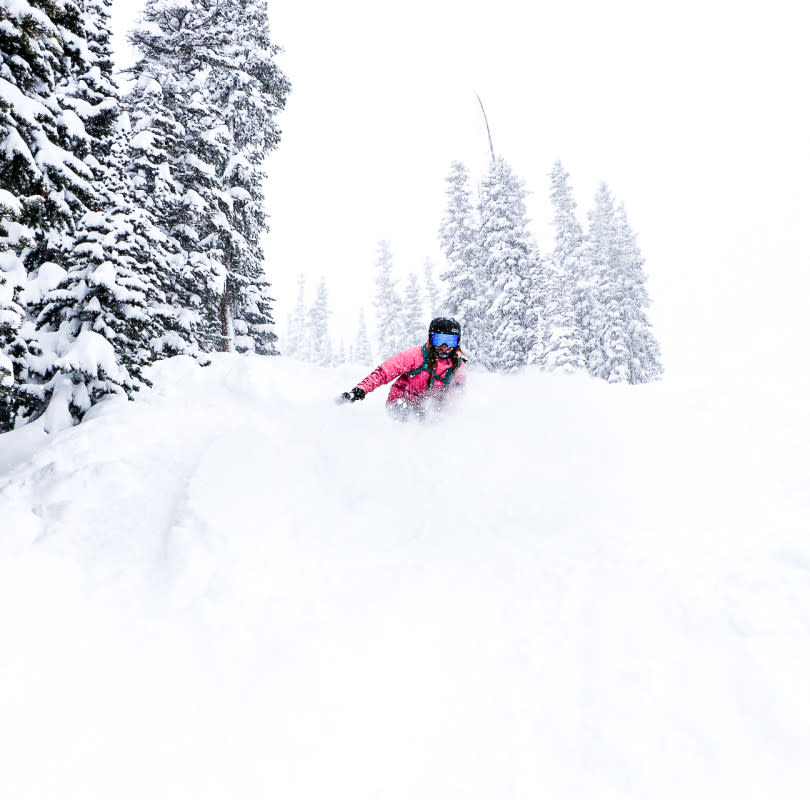
Photo courtesy of Cail Soria
“You don’t know what you don’t know,” Cail explains. “And there’s so much that your doctors and prosthetists can’t quite help you with if they’re not active amputees themselves. They have a lot of knowledge, but when it comes to fine-tuning details and finding the right gear, lived experience is really important.”
Finding others who shared her lived experience would be a game-changer for Cail. It happened almost by accident: “My friend Savannah was supposed to teach a photography clinic at an adaptive climbing festival and at the last minute couldn’t make it, so I filled in for her.” (Cail is, among other things, very talented behind a lens.)
“I hadn’t met another amputee yet at that point and then the next thing I knew, I was surrounded by one hundred and fifty disabled people who climbed. That really changed my perspective on things.”
Until that point, Cail says she had been learning everything on her own. From figuring out how to make her prosthetic fit on her snowboard well so she didn’t blow a knee (“I almost did that at first because I didn't know there were adjustments you could or should make,”) to finding the best ways to care for the skin around her amputation, Cail says she had no one to ask her questions of or to clue her in to things she hadn’t even considered.
But things shifted after Cail built relationships with others in the adaptive outdoor community. “I realized the value of being around people who know my same challenges,” Cail expressed gratefully. “I've learned so many tips and tricks from them, and it still blows my mind when something I thought was normal can actually be made significantly better.”
Their advice to not settle has come to translate over to Cail’s gear, too. She says she now tweaks the majority of her set up, though she is quick to point out that some solutions are less about creative adjustments and more about access to legitimate equipment.
“I was really lucky to be donated a snowboarding foot by an organization called Wiggle Your Toes. I don’t know if I would be enjoying snowsports that much if I didn’t have it.”
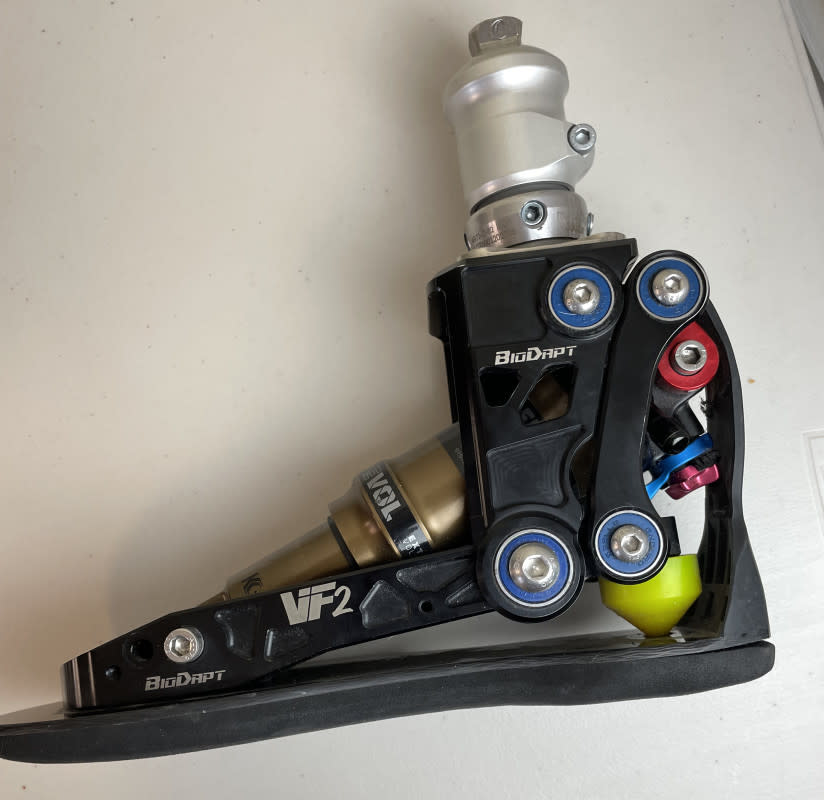
Photo courtesy of Cail Soria
Cail says the foot - a Versa 2 from BioDapt - is a bit heavier than her everyday foot and has a mountain bike shock in it to mimic ankle movement and ankle resistance. “It allows me to really ride my toe edge and dig in without my normal foot resisting and pushing back, and then when I switch over to heel edge, it goes back to resting so I can control pressure better.”
As far as Cail knows, there aren’t that many options to choose from when it comes to snowboard prosthetics. “You could probably count the amount of ski and snowboard feet on one hand or less. I was told about the BioDapt by prosthetists and a fellow amputee snowboarder and it seemed to be what everyone would use if they could.”
The next hurdle? What to put her prosthetic foot in to hit the slopes. “I really wish there was a prosthetic-specific snowboarding boot that you didn’t have to buy two of. What my prosthetic foot needs and what my other foot needs are very different.”
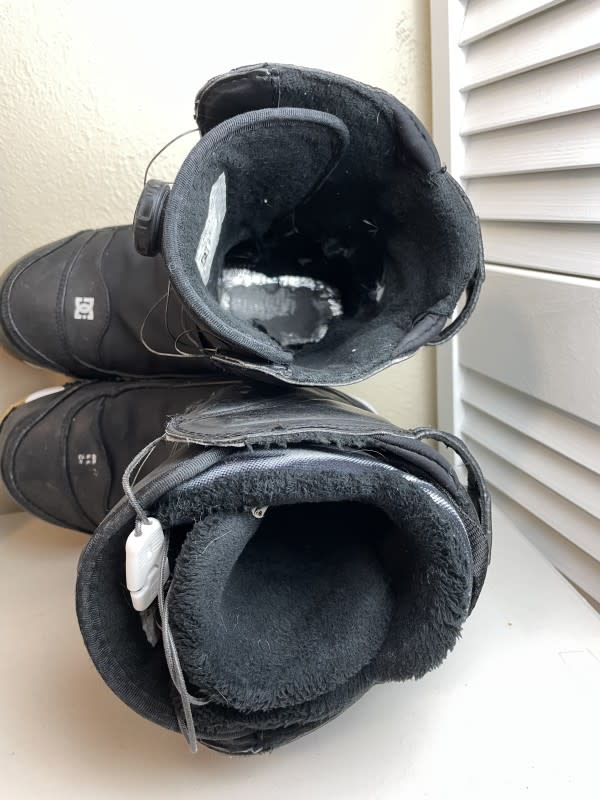
Photo courtesy of Cail Soria
Cail says for now, she’s riding in her old boots, after “completely deconstructing one so it’s mostly just a shell” to fit her prosthetic. “There’s not really a boot, at least for my riding preferences, that I can just pick up out of the box and put my foot in.” Bibs with a discrete zipper that allow her to access her prosthetic well are also on Cail’s gear wish-list.
And while snowboards themselves work right off the shelf for Cail, she says she has switched what type of board she rides since her amputation. “I used to have a board that was more flexible but I have one that’s a little stiffer now - the Aero by Season Equipment - and that’s really helped me because I rely on my back foot a lot to steer.”
Cail laughs that maybe as important as her gear is her innate stubbornness. “I didn’t take mediocre as an answer. I chose to be really determined. To me, it was a no-brainer to get back outside, but there were definitely moments where I wasn’t sure if it was going to be possible.”
Which highlights something else Cail is adamant about: good gear has to go hand-in-hand with good opportunities and, even more-so, personal agency. “I was helped in ways that made me feel capable and that is big for people, especially new amputees.” Cail explains. “
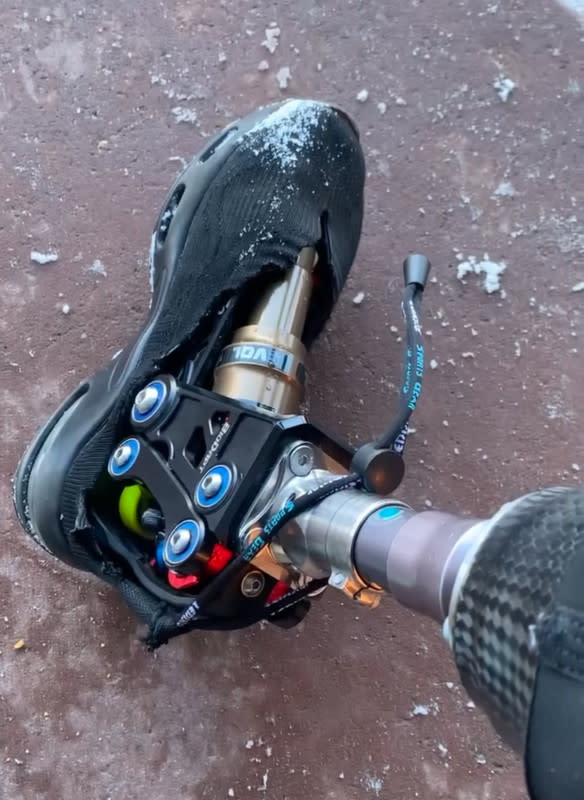
Photo courtesy of Cail Soria
“If your only experience with getting help in sports as a person with a disability is constantly being babied…” she trails off, a pensive look on her face. “I think that organizations that allow you to take risks like normal people do, because that’s what disabled people deserve, provides confidence in a lot of areas, not just in sports.”
To that end, Cail says, one of the things she struggles with perhaps more than finding boots or finding the right PSI for her foot’s shock, is being given the freedom to self-determine. Whether she is warming up in the climbing gym, strapping in at her local hill, or simply pumping gas, Cail expresses frustration that she’s constantly being told she’s an “inspiration.”
“I think it comes from having the mindset that disabled people shouldn’t and aren’t ever supposed to be able to do things like that, so if you are doing it, you’re exceeding expectations.”
And while she acknowledges that, for the most part, such comments aren’t ill-intentioned, they irk her nonetheless: “Because you're not exceeding your own personal expectations, you’re just exceeding society’s preconceived expectations for disabled people.”
“For me, too, when I wasn’t adaptive, it was ‘Oh she’s good for a girl.” Now, it’s ‘Oh, she’s good for an adaptive athlete.’” The tone to Cail’s voice is the verbal equivalent of an eyeroll. “I don’t mind being called an adaptive athlete but I always like to be called simply an athlete first, because I’m climbing and snowboarding just as well as, if not better than, the able-bodied people I’m with a lot of the time.”
Another somewhat bemusing reality Cail has come up against? “When you become an amputee and have any interest in any sport ever, everyone immediately says that you have to compete, you have to join the US team.” She laughs. “What if I just want to hang out and enjoy my time?”
When asked where that comment stems from, Cail’s take is that it comes from a desire for bigger and better things: “It’s pretty niche to be in adaptive sports and overall adaptive sports need more notoriety, so if you have a platform, folks want you to push the sport through competition.” But Cail says that attitude simultaneously - and ironically - can also feel like it pigeonholes athletes with disabilities.
For Cail, the goals she sets for herself are just that: for her. And she makes sure to celebrate success along her way, partly in response to the fact that, so often, the conversation around athletes with disabilities focuses on hardship instead of joy.
“I just finished two films that I'm excited about,” Cail smiles. “One of them is called ‘Welcome to the Red,’ and it's a climbing film about that adaptive climbing festival I mentioned earlier. The other one is called ‘Surface Tension,’ and it’s a ski film.”
“I’m also going to integrate uphill into my life,” Cail shares excitedly. “I have the Season Equipment split board setup, and am looking into getting the Spark R&D bindings.” Cail says she also has a brand new socket she’s also tinkering with to get it to play well with her board and foot.
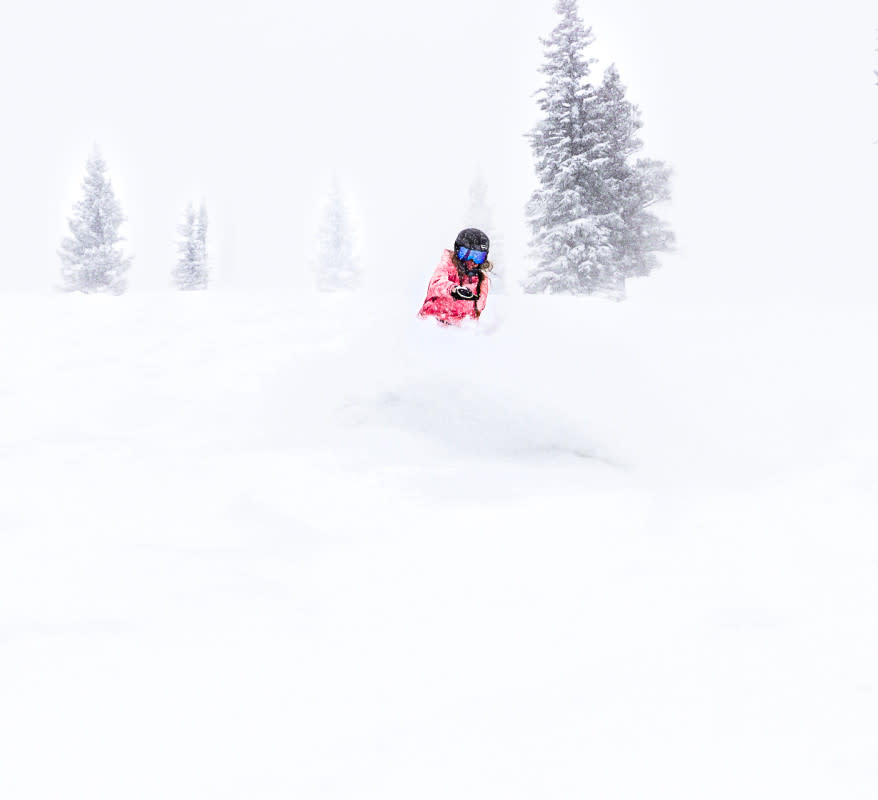
Photo courtesy of Cail Soria
“Uphill is going to be different,” she admits. “Because I don’t know if I’m going to need to bring different feet along, for example. That’s something I’m going to have to find out, for myself, as I go, and I’m really looking forward to it.”
As for her goals for next year? Cail says heli-skiing, skiing in Japan and skiing in Canada are top of an ever-growing list. “None of those are set in stone yet, but hopefully they’ll line up.”
To keep up with Cail’s journey as she continues to build community, occasionally sasses folks back when they make assumptions about her, and tackles the skin track for the first time, follow her on Instagram at @cailsoria

